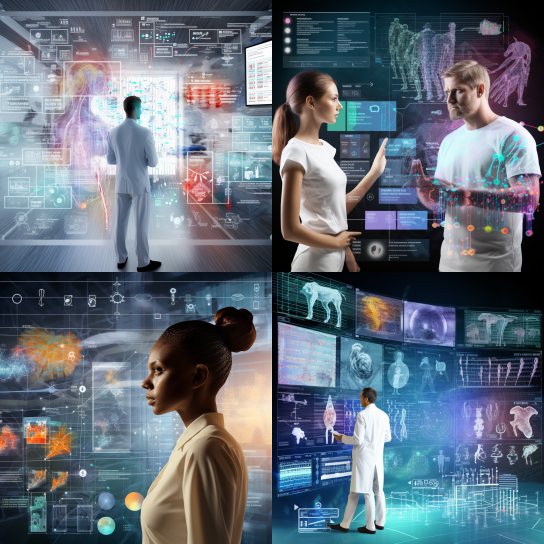Applications of machine learning and AI in Healthcare to drive the innovation
Applications of machine learning and AI in Healthcare
Applications of machine learning and AI in Healthcare to drive the innovation
Applications of machine learning in Healthcare
In healthcare, machine learning could help provide more accurate diagnoses and more effective healthcare services, through advanced analysis that improves decision-making.
Real "AI Buzz" | AI Updates | Blogs | Education
One example of this function comes from breast cancer diagnosis. Breast cancer diagnoses typically include an assessment by pathologists of a tissue sample, in which doctors look for certain features that indicate the presence or extent of disease. A machine learning system trained on tissue images was able to achieve a higher accuracy than pathologists, by finding and utilising features of the image that were predictive but had not previously been used in the pathology assessments. In doing so, the system was able to help doctors more accurately assess a patient’s prognosis.
Another example of this function comes from the diagnosis of diabetic eye disease, which is frequently identified via specialist examination of pictures of the back of the eye. The presence – or severity – of disease is determined by the presence of features in these images that indicate bleeding or fluid leakage. Researchers at Google have created a deep learning algorithm that can analyse these images, training the system using a dataset of 128,000 images, which had already been evaluated by human experts. The resulting system could diagnose the disease to a level of accuracy that was on-par with human ophthalmologists. Further work in this area is now assessing how the system could help doctors, or be evaluated in clinical studies31. Similar successes have been found in the use of machine learning to diagnose skin cancer. There are also other machine learning techniques that can provide decision-making support for doctors.
For example, IBM’s ‘Watson’ uses machine learning in various ways. One of these is natural language processing – the form of machine learning which allows computers to process written or verbal information – which Watson uses to extract information from the vast collection of published research papers and case reports, and use this information to recommend treatment options.
Moving forward, the potential for machine learning algorithms to assist doctors is substantial. Tasks such as extracting features from complex data sets like images, ECGs, and other monitoring devices; or spotting patterns indicative of health or illness in individuals from medical records, wearable devices; or combining information from disparate sources to reach diagnoses and treatment decisions, are all well-suited to machine learning approaches. With access to the right kind and volume of training data, machine learning algorithms would be expected to perform well in many of these settings.
Read More









Leave a Reply